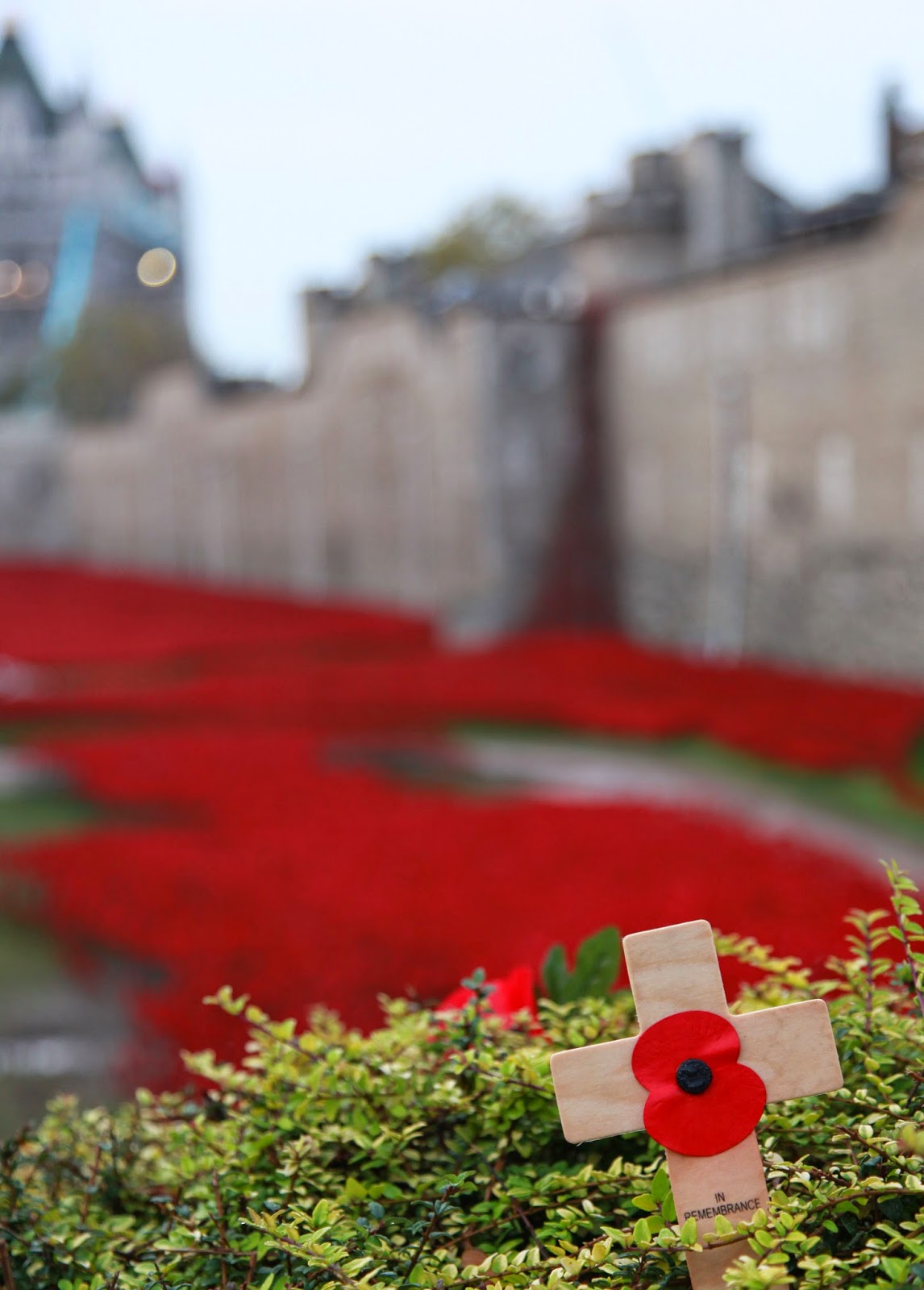It also meant that when I first heard about the Tower poppies, I expected to make several trips to see them, to watch the "field" growing. Did I? No, I didn't. And as Armistice Day drew closer, I found myself busier with work and uni, ill with first a migraine and then a virus, and refusing to go at any time other than dawn. Perhaps it's nothing to do with living in South London for the best part of four decades, and more to do with my own stubbornness.
Last Thursday I returned to work, and thought I would go and see the poppies before my first appointment. I knew they had started to dismantle them the day before, but I also knew that it would take a long time - 888 246 ceramic poppies need much gentle care.
I quickly took a few photos of the view from London Bridge towards Tower Bridge. When I used to work in Essex, I would often walk to Liverpool Street from Cannon Street or London Bridge. The walk from Cannon Street reminded me of Roald Dahl's short story, Galloping Foxley (if you tend to get the same train to work every day, I recommend a read of it). But the walk from London Bridge meant I could see this view in the morning.
I'll never tire of it.
I saw Tower Bridge and City Hall up ahead as I walked along the south side of the river. Tower Bridge is fantastic - it's so colourful and distinctive. I adore City Hall, too. I think it's a beautiful building, and I regret not taking photos of the interior and the view when I got to visit it ten years ago.
I crossed the bridge and saw the poppies gradually and then suddenly.
I realise now why Tower Hill is said to be the best side for viewing - it's nearer to the poppies and at a similar height, whereas the river side has a longer drop down and the poppies are nestled down there.
One thing that struck me was the mud. Nearly every book I've read about war, every poem and memoir, describes the mud and the rain, the boredom and the emptiness, as much as the horror and the blood.
The ceramic poppies were designed by the artist who came up with the idea for the installation, Paul Cummins, and were arranged by stage designer, Tom Piper.
The official name of the installation is Blood Swept Lands and Seas of Red, and comes from the words of a man who left his home in Derbyshire to join the First World War, but died in Flanders. Each of the 888 246 poppies represents a "British or Colonial military fatality during the First World War". The total number of casualties, according to the Imperial War Museum, was more than 16 million. Cummins said he hoped people visiting the installation would take time to reflect, and although I found it hard to imagine the magnitude of the casualties, I did reflect.
Ceramic poppies created the sea of red, but there were other flowers to be seen. A yellow rose and a bunch of alstromeria had been tied to the railings, paper and knitted poppies were left nearby, and roses and fuchsia grew around the tower.
How wonderful that a part of this display, that caught the hearts and minds of an estimated 5 million people, will be seen by even more.
































No comments:
Post a Comment